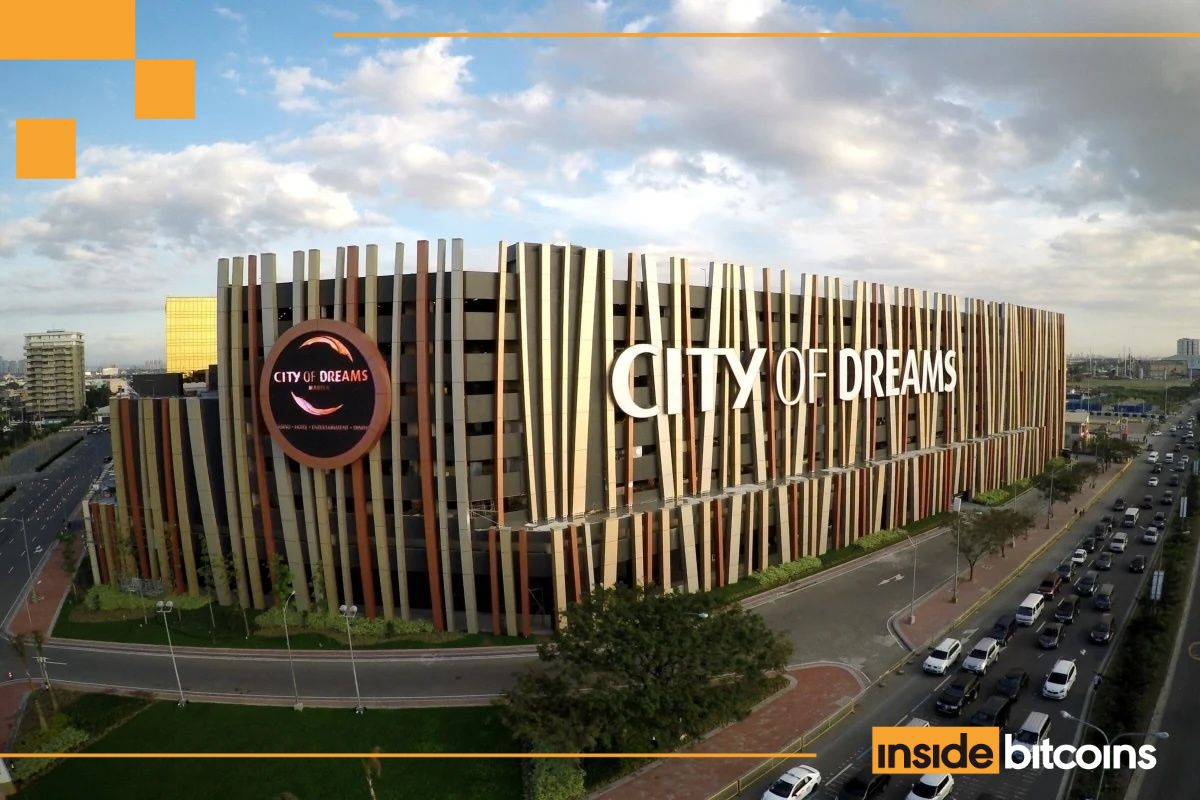The Philippines gaming market has encountered significant headwinds in 2024, with South Korean slot machine manufacturer Kangwon Land, Inc. reporting a substantial softening in what has historically been one of their primary target markets. According to Chang Nam, Deputy General Manager at Kangwon Land, the Philippines gaming sector has faced challenges from the beginning of the year, with the government’s decision to shut down Philippine Offshore Gaming Operators (POGOs) emerging as a key contributing factor to this downturn. This development adds a critical dimension to understanding the current struggles facing Philippine casinos, which, despite showing initial recovery following the COVID-19 pandemic, have experienced notable revenue contractions in 2024.
Kangwon Land: A Major Player in Asian Gaming Manufacturing
Kangwon Land, South Korea’s premier casino resort operator and gaming equipment manufacturer, has established itself as a significant player in the Asian gaming equipment market through its KL Saberi slot machine brand. The company’s interest in the Philippines stems from the market’s traditionally open approach to diverse gaming products, creating opportunities for both established and emerging suppliers. With annual visitor numbers reaching several million and annual sales exceeding a substantial amount, Kangwon Land has leveraged its resources to expand its manufacturing division’s international presence.
The company is currently undertaking a massive expansion project at its South Korean operations, breaking ground on a large capital investment that will increase its gaming floor by 40% upon completion in the coming years. This expansion will increase table inventory and add hundreds of new slot machines, bringing the total to over a thousand. Most notably, the project includes regulatory changes that will increase betting limits for foreign players by a significant margin – a move designed to attract international high-rollers.
Recent financial results for Kangwon Land show mixed performance for the first quarter of 2025, with sales marking a moderate increase from the previous quarter but a slight decline year-over-year. Operating income demonstrated remarkable growth, increasing substantially quarter-over-quarter. However, net income declined from the previous quarter.
Kangwon Land’s Strategic Focus on International Visitors
In early 2025, Kangwon Land launched a trial of a foreigner-only casino zone aimed at establishing itself as an international casino-resort destination. This initiative follows regulatory changes implemented in the previous year that allowed for capacity expansion and includes significantly increased betting limits in the dedicated foreign visitor area. The company welcomed a notable increase in foreign guests in 2024, representing growth over the prior year.
POGO Industry: Rise and Fall in the Philippines
Philippine Offshore Gaming Operators began operations in the Philippines in the early 2000s but experienced substantial growth starting in the mid-2010s when government policy changes stimulated revenue and job creation. These operations primarily offered online gambling services such as electronic casino games and sports betting to customers outside the Philippines, with Chinese nationals comprising the largest customer base due to gambling restrictions in mainland China.
At their peak in 2019, there were nearly 300 POGO licensees operating in the country, occupying a vast amount of office space and surpassing the business process outsourcing industry in new office space demand that year. The industry’s economic impact was substantial, with annual office rental costs reaching hundreds of millions of dollars for commercial and residential properties.
Employment Impact and Demographics
Before the industry’s mandated closure, POGOs employed approximately 48,883 workers as of the third quarter of 2024, with a majority being local Filipinos. This represents a significant shift from earlier years when foreign workers dominated the sector. In March 2020, for instance, foreigners comprised the majority of the POGO workforce, with Chinese nationals accounting for most of these positions. Employment figures fluctuated significantly during the COVID-19 pandemic but gradually showed increased Filipino participation rates, rising from a small percentage in 2019 to more than half by 2021.
The POGO Ban and Its Implementation
In July 2024, the Philippine government announced a complete ban on all POGOs, directing the relevant authorities to halt operations by the end of the year. The announcement received enthusiastic support in the Philippine legislature, with lawmakers promising swift action to implement the directive.
The ban was justified by citing numerous illicit activities associated with POGOs, including financial crimes, human trafficking, and other serious offenses. The announcement followed a cost-benefit analysis which apparently showed that the negative impacts of POGOs outweighed their economic benefits.
The ban followed years of increasing controversy surrounding POGOs, which had been linked to serious crimes in the Philippines. A major enforcement action occurred in mid-2024, when authorities raided a large complex, resulting in the arrest of numerous individuals and the rescue of several foreign and local citizens.
VIP Segment Suffering Across Major Operators
Philippine casino operators have reported significant declines in VIP gambling segments, which industry observers directly connect to the departure of POGO operators. Many POGO operators were substantial players in land-based casinos, often acting as VIPs due to their significant spending.
Okada Manila, one of the country’s major integrated resorts, reported a net loss in the first quarter of 2025, attributed partly to decreased VIP gambling activity and fewer international guests. Their total sales declined by over 20 percent compared to the previous year. Similarly, Solaire Resort & Casino at Entertainment City saw its gross gaming revenue fall by 18 percent, with VIP gambling specifically decreasing by a similar margin.
These financial results illustrate the substantial impact that the removal of POGO-related high-rollers has had on the traditional casino industry. While the electronic gaming segment and platforms such as VPN-friendly casinos have shown growth, licensed casinos have struggled with year-over-year gross gaming revenue declines that contrast sharply with the overall industry trends prior to the POGO ban.
Chinese Tourism Decline Compounds the Problem
The reduction in VIP gambling coincides with a significant decline in Chinese tourism to the Philippines. Statistics show that China has dropped from being the second-largest source market for Philippine tourism in 2019, with almost 1.75 million visitors, to a much lower ranking in 2024 with just over 300,000 visitors. From January to April 2024, Chinese tourist arrivals fell significantly, representing a large year-on-year decrease.
In contrast, South Korea remains the top source of international visitors during the same period, though this still represents a decline from previous levels. The tourism downturn has direct implications for integrated resorts, which rely heavily on international visitors for both gaming and non-gaming revenue streams.
Competitive Advantages of Philippine Gaming Market
Despite current challenges, several factors continue to make the Philippines an attractive market for gaming suppliers like Kangwon Land. The Philippine market offers a wide variety of games, featuring suppliers from around the world. While some companies are smaller, this openness gives them an opportunity to enter the market.
From the perspective of Korean visitors, the Philippines presents a cost-effective option compared to other Asian gaming destinations. Even with substantial betting limits, Philippine casinos typically offer generous rewards including complimentary accommodations and other amenities for high-value players, which may not be available in other markets.
Future Outlook for Philippines Gaming Sector
The combined impact of the POGO shutdown and reduced Chinese tourism presents significant challenges for the Philippines gaming industry. However, several factors may influence its recovery trajectory. Kangwon Land’s own strategy for attracting foreign visitors through dedicated gaming zones and enhanced betting limits offers a potential model for Philippine operators seeking to reposition themselves in the post-POGO landscape.
Kangwon Land’s recent financial performance demonstrates that operational adjustments can yield positive results even in challenging market conditions, with the company’s substantial increase in operating income despite flat sales suggesting effective cost management and operational efficiency. Philippine operators may need to adopt similar strategies to weather the current downturn.
The planned expansion of Kangwon Land’s gaming floor and substantial increases in gaming equipment inventory signals the company’s long-term confidence in the Asian gaming market despite short-term fluctuations. This perspective may provide valuable context for evaluating the long-term prospects of the Philippines gaming sector beyond the immediate impacts of the POGO ban.
Ripple Effects
The departure of POGO operators from the Philippines has created ripple effects throughout the gaming ecosystem, with impacts extending beyond direct employment and real estate to include significant reductions in VIP gambling segments at major integrated resorts. Insights from industry leaders highlight the interconnected nature of different gaming segments and the challenges facing equipment manufacturers targeting the Philippine market.
As the industry adjusts to this new reality, operators and suppliers will need to identify alternative growth strategies and potentially reorient their offerings to attract different customer segments. The experience of Kangwon Land in developing specialized offerings for international visitors may provide valuable lessons for Philippine operators seeking to rebuild their high-value player bases in the post-POGO era.
Related Pages
-
- Gambling Industry Growth in the Philippines Fueled by E-Gaming
- Philippine Government Implements Comprehensive Ban on POGOs and IGLs in Response to Public Concerns
- Philippine Mayor on the Run Amid Accusations of Espionage and Fake Casinos
- Quezon City Mayor Restricts Government Workers from Solaire North Casino


